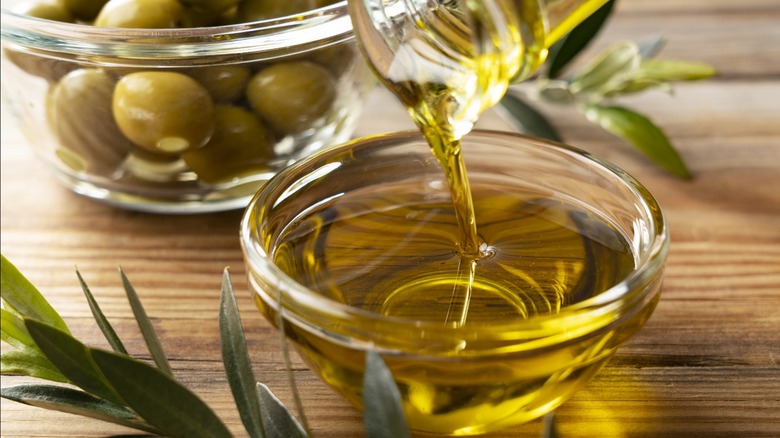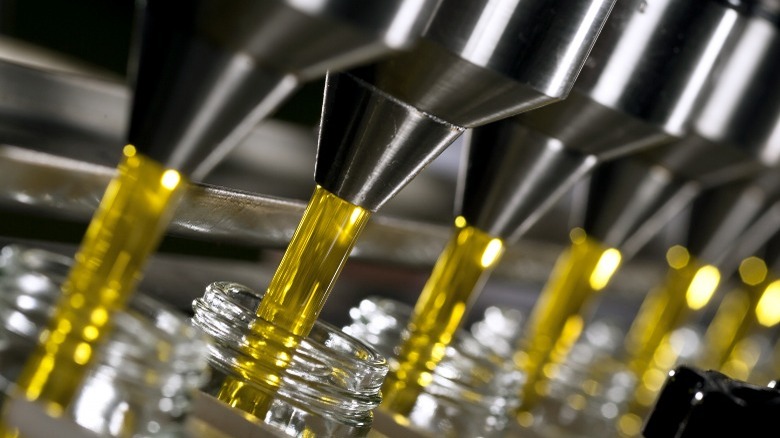Cold-Pressed Vs. Cold-Extracted Olive Oil: What's The Difference?
A kitchen without olive oil is like a house with no foundation. Martha Stewart calls this Mediterranean staple a "pantry essential," but shopping for the best variety for your home isn't a simple endeavor, according to Simply Recipes. There are as many varieties of olive oil as there are uses for it.
When shopping for the best olive oil, try to opt for extra virgin every time. Oil with this classification has fewer impurities, and it hasn't been through a heating process. It's also lower in acidity because the olives are separated from the oil before the pulp begins rotting. It's the best option for all of your cooking needs. Virgin oil, on the other hand, has slightly more acidity. You should reserve this oil for uses like sautéing, frying, and roasting, but don't drizzle it over your salad.
What makes an olive oil extra virgin comes down to its production process, which has changed with the modernization of technology, per Aceite de las Valdesas.
Olive oil production defines quality
No kitchen should operate without olive oil, according to Simply Recipes. The production process for this cooking oil and pantry staple has changed over the years. Many people think that the best olive oil is cold-pressed, however most producers no longer use this method, per Aceite de las Valdesas.
Before the invention of modern technology, producers manufactured cold-pressed olive oil, by squishing the olives between two presses to separate the oil and the pulp. When the pulp was discarded, and that batch of oil got bottled, it received the "first cold-pressed" classification, which signifies the highest level of purity, according to Aceite de las Valdesas. However, if the remaining pulp went through multiple rounds of pressing before the oil was bottled, it lost some of its quality because the pulp would rot over time. Cold-pressing was once the widespread form of olive oil production and a requirement to be considered extra virgin. But the process has been revolutionized by the use of centrifuges.
Today, olive oil is most often produced through a process called "cold extraction." To make cold-extracted olive oil, centrifuges — devices that use centrifugal force to separate liquids, according to Merriam Webster – are used to extract the oil from the fruit. The temperature must stay below 27 degrees Celsius to receive this label. Today, to be considered extra virgin, the olive oil must be cold-extracted, Olive & Co. reports.

